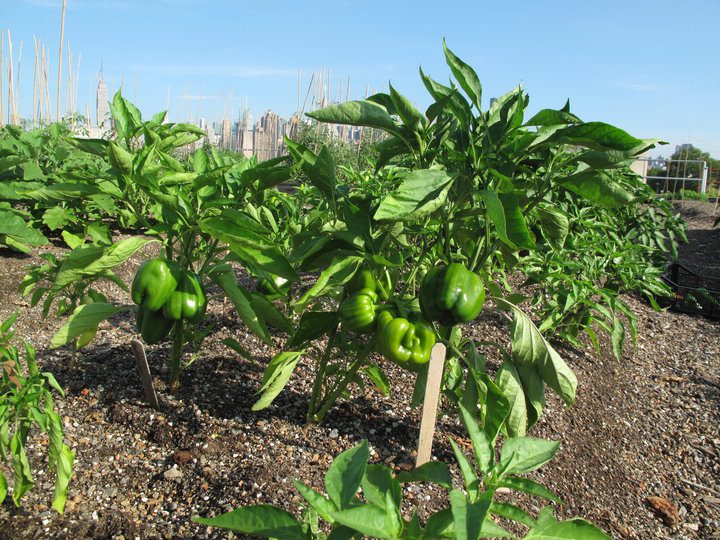Have you ever wondered how rooftop farms the size of Brooklyn Grange’s Flagship Farm are possible? They don’t grow hydroponically, not there where they started in Long Island City, or atop the Brooklyn Navy Yard, and neither does Eagle Street Farms. These are soil-based farms. Not container grown crops either. The entire rooftop has been resurfaced to allow all manner of crops to thrive there.
Brooklyn Grange’s largest farm is almost a full acre at 43,000 square feet on a single building. The soil depth is 10 inches – some 1340 yards using topsoil for landscaping calculations. At 1800 pounds per yard! All those tons of constant weight, and that’s before you add all the plants and produce growing up there. Then you’ve got the rainy spring and fall seasons. In a New York City winter, you’ve also got lots of snow load and ice. Since that building has been standing for decades, it’s not like they designed the roof to withstand dirt farming. It was engineered to deal with rainwater, ice, and snow.
What makes this entire scenario feasible is they’re using specially designed growth media. It’s rooflite intensive ag, a green certified media that was perfected at Flagship Farm, and Eagle Street Farm – these two projects provided rooflite the opportunity to optimize their green roof media system for growing food crops.
So, now you know the secret to installing not just soil for growing, but also crop drainage several stories above the ground. And it’s not just the weight on the building structure that is an issue when you put together this kind of urban farm. Some how you have to get the soil from the street to the roof, which makes it an incredible feat if you tried to truck that much ground soil – up flights of stairs, via elevators, or with cranes.

rooflite has formulated growing media blends for a variety of climates. It’s used around the world, but mostly for green roofs that allow buildings to be more energy efficient, though there are private residences where the architects or landscape designer have used rooflite products to install gardens. They have 17 mixing locations in North America, and they also have operations in Mexico and the Caribbean. By the way, I haven’t neglected to hit the shift key when typing this company name. It looks weird all small case, but that’s exactly how it’s supposed to be.
Not all 17 locations presently mix rooflite intensive ag yet, so for some locations shipping costs could get high. Still being able to grow truly organic produce may be the greater value, and rooflite growing media makes this possible. It wasn’t created for containers, which means you’ve got to modify it to turn an entire roof into a massive planter. You do need drainage, or your rooftop farm will turn into a swamp. rooflite makes a product called, rooflite drain, but other adequate drainage can be used. There is also a rooflite base media which is specially designed to meet the deeper root environment needs that many crops have.
Depending on where your rooftop urban farm is, and the needs of your specific crops, your situation could require more than 12 inches of media. These are details that each farmer would need to discuss with the roof growing experts at rooflite.
The closeup photo above gives you a good shot of the texture of rooflite’s intensive ag product, and how happy crops are living it too. Image courtesy of Off Metro.
Learn More: RoofliteSoil.com and intensive ag growth media specs.